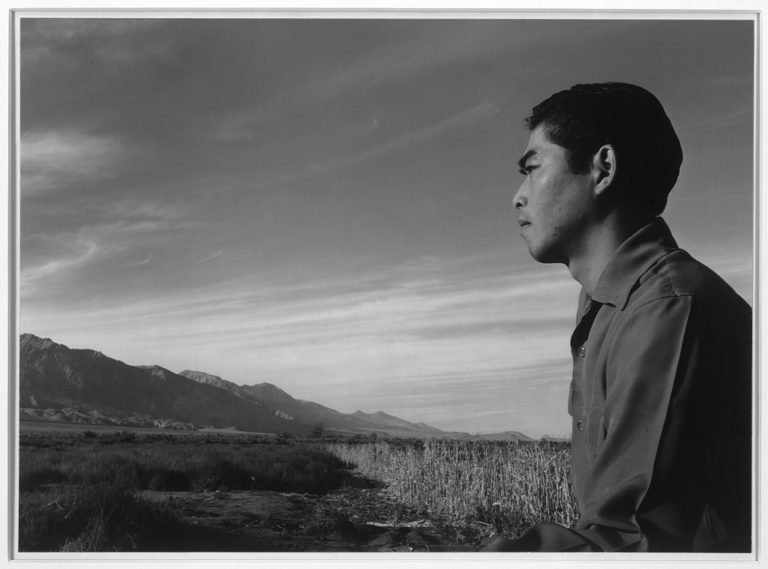This article examines the role of landscape in the visual and narrative representation of Japanese incarceration in Ansel Adams’s Born Free and Equal. Specifically, by analyzing the way it both draws upon and reworks what art historian Albert Boime calls the magisterial and reverential gaze, I argue that Born Free revises the thematic and visual trope of US frontier mythology to articulate a US racial liberal “structure of feeling” in the American century. Born Free oscillates between landscapes and portraits to establish an aestheticized account of frontier nature. In so doing, it forges a vision of racial democracy that can simultaneously “americanize” the Japanese body and universalize US global power. In other words, Born Free’s aestheticized frontier positions the minoritized Japanese body as a national icon that testifies to the racial liberal values of the US, and thus can authorize American (neocolonial) power globally.
Articles by Christian G. Ravela
Christian Ravela is an Assistant Professor of Humanities and Cultural Studies in the Department of Philosophy at the University of Central Florida. He specializes in 20th century US multiethnic literature, comparative ethnic studies, and critical theory. His work has been published in MELUS, Modern Fiction Studies, and Queers Studies in Media and Popular Culture. He has forthcoming essays in Cultural Critique, Genre, Syllabus, and American Studies Journal. He is currently working on two projects. The first examines the formation of racial liberalism in the visual representation of Japanese incarceration. The second is a book-length project that examines late 20th century Bildungsromans by US multiethnic writers as cultural sites for both negotiating the political economic contradictions after the civil rights era and limning a global political imagination of race.
